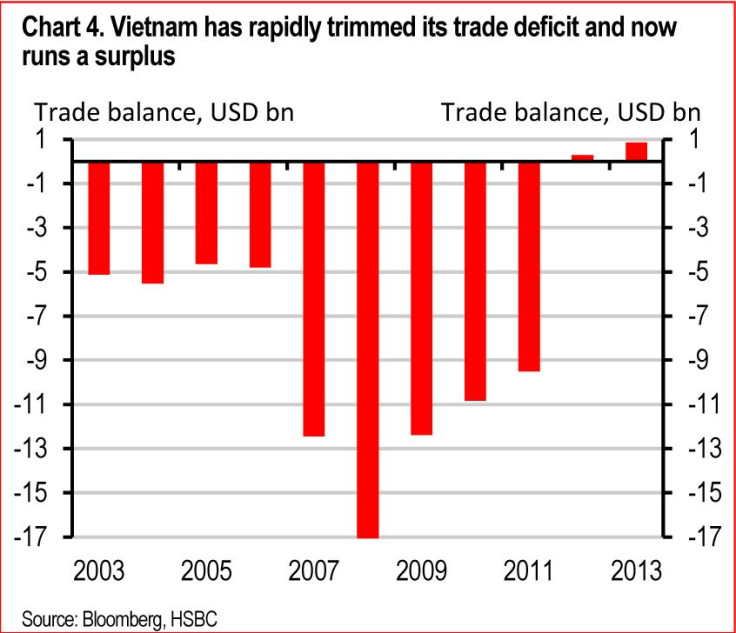Vietnam Economic Outlook 2014: Exports, FDI To Support Growth

The future is looking brighter for Vietnam as the country begins the Year of the Horse, economists say.
“With global conditions improving and trade negotiations in the works, export-oriented firms will enjoy another year of robust growth,” said Trinh D Nguyen, an economist at HSBC, in a note. “Exports, especially foreign-invested manufacturing firms, will provide a boost to Vietnam’s growth [in 2014].”

Nguyen expects exports to rise 20 percent this year from 15.4 percent in 2013, which will help gross domestic product expand 5.6 percent in 2014, up from 5.4 percent in 2013.
Foreign direct investment (FDI) is likely to grow strongly in 2014, outpacing overall growth and resulting in a “two-speed” economy, Standard Chartered's Betty Rui Wang predicted.
“International manufacturers and investors are attracted to Vietnam’s low-cost labor pool and large domestic market … [they] are showing sustained investment interest in the country, despite structural challenges to the economy,” Wang said.
Registered FDI rose 95.8 percent to $13.1 billion in the first 10 months of 2013, and disbursed FDI rose 6.4 percent year-over-year to $9.6 billion over the same period.
While foreign-invested sectors accounted for only about 18 percent of 2012 GDP, they accounted for 63 percent of Vietnam’s exports and 53 percent of its imports.
Electronics exports have also significantly increased in importance over the past few years -- they now make up 24.5 percent of total exports, compared with 4.4 percent in 2008, according to Prakriti Sofat, an economist at Barclays Capital. The main impetus has come from mobile phone exports -- with shipments accelerating sharply since late 2011.
In 2009 Samsung Electronics Co., Ltd. (KRX:005930) opened its first handset plant in Vietnam, (total investment of $1.5 billion), which is also its second-largest factory worldwide. The company, which surged past Apple Inc. (NASDAQ:AAPL) to the top of the mobile-phone industry, built the business by tapping China’s cheap and abundant labor force. But not for much longer. Samsung is shifting its output to Vietnam to take advantage of even lower wages.
The South Korean company recently signed a contract to build its second factory ($2 billion), which will make 100 million phones a year. Other mobile phone companies such as LG Electronics Inc. (KRX:066570) and Nokia Corporation (NYSE:NOK) are also investing. Nokia opened its first factory in Vietnam in October 2013. The $300 million plant is expected to create 10,000 jobs and produce 45 million handsets per quarter, Thanh Nien News reports.
Vietnam’s wage levels are a lot lower than elsewhere in Asia. According to a JETRO report, monthly pay for general workers in Vietnam is roughly 32 percent of levels in China, 43 percent in Malaysia and Thailand and 62 percent in Indonesia.
“Looking into 2014, we expect further price hikes for energy commodities such as electricity and fuel. While inflation will accelerate in 2014 to 7.9 percent (average), the State Bank of Vietnam has scope to keep rates on hold in the first quarter of 2014,” Nguyen said.
© Copyright IBTimes 2024. All rights reserved.












